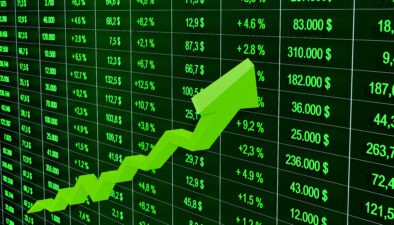Warren Buffett isn’t well known for predicting market moves. Preferring to buy and hold long term, he’s more of a fundamentals guy. That doesn’t mean he’s above making the odd prediction, though. Before the late-2000 financial crisis, Buffett said he had a “feeling” that we were headed for a recession. In 1967, he hinted at an overvalued market, saying that he was “out of step with current conditions.”
So, it’s undeniable that Warren Buffett has an opinion on where the market as a whole stands. It may not be the single biggest factor in his decisions, but it is a factor.
In fact, Buffett’s name is even attached to an indicator that many investors use to anticipate market moves. The “Buffett Indicator” was popularized back in 2001. Since that time, this indicator has tended to rise in overheated markets and fall in undervalued ones. And right now, it suggests that stocks may be in for a steep decline.
Market cap to GDP
Market cap to GDP is a ratio computed by dividing world market cap by U.S. GDP. It says, basically, how expensive stocks are compared to economic output. When this ratio gets high, it suggests that stocks are overvalued, as stock prices are gaining compared to the underlying economy. Conversely, when it’s low, it suggests that stocks are undervalued. According to Guru Focus, the ratio currently sits at 174%. That’s higher than it was in 2001 or 2008, suggesting that a crash is coming.
Interpreting the Buffett Indicator
There’s one thing you need to note about the Buffett Indicator. That is, the computation goes off world market cap, not a region-specific one, so it may not capture the dynamics in a specific country. The version of the ratio quoted from Guru Focus, for example, uses world market gap to U.S. GDP. The ratio would be different if it were world market cap to world GDP or S&P 500’s market cap to U.S. GDP.
Nevertheless, the indicator has proven very reliable throughout history. In 2001 and 2008, the ratio was trending upward, while in the immediate aftermath of those years, it trended downward. Both 2001 and 2008 saw pronounced market crashes. So, if you’d picked your buying at selling points based on the Buffett Indicator in those years, you’d have done well.
What are the implications for investors?
The most obvious would be that stocks are getting expensive. Beyond that, the Buffett Indicator can’t tell you much. It’s a metric for the market as a whole, not for individual stocks. However, if you think that the Buffett Indicator is useful, you could use similar metrics to analyze individual stocks.
One stock that appears undervalued based on such metrics is Suncor Energy (TSX:SU)(NYSE:SU). It’s a Canadian energy company that got hit extremely hard by the COVID-19 recession. Down 57% year to date, it has been one of the TSX’s biggest losers.
However, it’s also a very cheap stock with a high dividend yield. Trading at 0.76 times book value, it technically costs less than the net value of its assets. It’s also cheap relative to sales, with a 0.9 price-to-sales ratio. Its projected forward P/E ratio is a little high at 27.5. But remember, that “forward P/E” is an estimated ratio. The estimates could be wrong.
On the one hand, Suncor Energy is cheap for a reason. The energy industry has been doing very poorly over the past five years, and it did extremely poorly in 2020. On the other hand, the extreme downward pressure on oil prices that produced Suncor’s current valuation won’t last forever. It should bounce back, at least somewhat. In the meantime, the stock has a juicy yield of 4.8%. It’s a pretty solid income play that Buffett himself owns.








